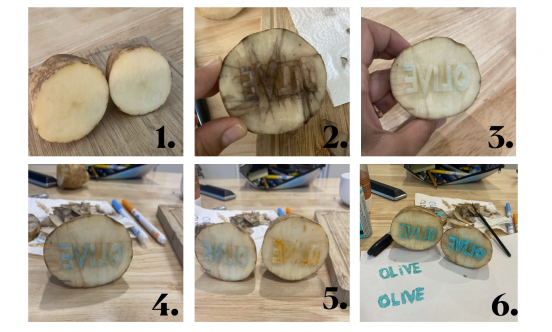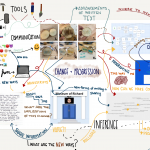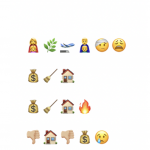Task Four – Potato Printing
Starting this task, I thought it was going to be easier than initially thought. Coming up with a word was quite tricky because I avoided letters with curves, as straight letters are much easier to draw, replicate and carve. I was trying hard to keep my letters the same size on both potatoes, which also was easier to do with straight letters as they are more uniform and symmetrical.
Once I had a word chosen, I began writing it backwards on the potato. Again, more complicated than I expected. I carved my first one and realized that I spelt the word wrong! I re-started the activity, and in total, it took around an hour, maybe a little longer. The second one was much easier than the first, as I had developed a system to make the process more straightforward. Painting and stamping them brought my mistakes to light once stamped. I could more clearly see where I deviated from the drawing on the potato and see the differences between the two.
Module 4.2 on mechanization of writing brings light to the details, extended periods, and patience required for creating scripts and writing systems. Clement describes the process of the creation of manuscript books as early as 84-86 AD. Their techniques were way more advanced than that of the potato carving. It brings light to how unbelievably far we have come as a society in the advancements of written text.
Clement, Richard W. (1997). “Medieval and Renaissance book production (Links to an external site.)”. Library Faculty & Staff Publications. Paper 10. https://digitalcommons.usu.edu/lib_pubs/10







Neill McCallum
November 15, 2021 — 1:46 am
Hi PJ,
Your potato print came out great! I also noticed that non-rounded letters were a lot easier to carve but decided to go through with my choice of “EARTH” (the “r” was really tricky). Could you imagine doing this on a miniature scale carved into harder surfaces? I cannot believe the level of physical effort and planning that had to go into early printing presses.